FOUNDATIONS REVEALED COMPETITION ENTRY

Lady Meng-jiang
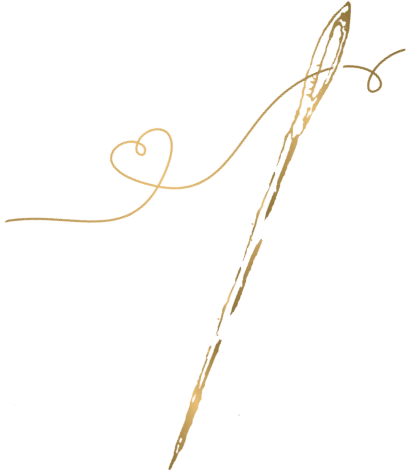
Outline the story …
According to Chinese legend, Lady Meng-jiang's husband, Qi-liang, was conscripted by the emperor to build the Great Wall. A loving wife, she traveled hundreds of miles to bring him warm winter clothes but instead learned that he had died and was buried inside the wall. Overcome with grief, she weeps until her tears break open the wall and hundreds of bones pour out. In order to give her husband a proper burial, she must identify his bones from among the others; she reasons that because they are one flesh, Qi-liang's bones will absorb her blood while others' will not. She bites her flesh until it is bleeding and flings her blood over bone after bone until she finds all of her husband's. The legend ends with the emperor hearing of her devotion and insisting on marrying her himself, but rather than betraying her marriage vows, Meng-jiang flings herself into the river. This final act might be considered admirable, but as a child I found it deeply unsatisfying, so my outfit is a reimagining of the ending. Flayed and bloody from her efforts to recover her husband's bones, my Meng-jiang dons her husband's ribcage as battle armor and instead goes on a vengeful rampage against first the self-aggrandizing emperor, then other governments whose selfish actions ultimately harm the vulnerable members of society. My entry is a tribute to all those who are bloody but unbowed, as well as a call to collective action that leads us into another, more just world.
Outline the construction…
I made several iterations of cardboard mockups of my stays pattern draft, using shapes based on 17th century stays, then constructed the inner structured portion by sandwiching my ziptie boning between layers of duckcloth. I assembled each piece separately then whipstitched them together by hand and covered the seams by hand-felling down twill tape. The drapey linen fashion fabric is flatlined with flannel for stabilization and embellished by hand with beads, sequins, and pieces of lace and fabric, then mounted onto the foundation and the edges bound with petersham ribbon by hand. I drafted a dartless bolero and assembled the organza body before machine-sewing the ribcage appliques, then experimented with cutting, folding, and hand-tacking additional fabric for the backbone. The scapulae ridges were stuffed to create dimension. I dyed netting to make the bolero sleeves and bound the armscyes, neckline, and body edges with bias tape. Unfortunately, the shoulder seams were unbearably itchy because of the organza edges, so I had to add a soft jersey knit piece on the underside at the last minute for comfort. To support the full circle skirt at the waist, I used horsehair canvas to make a structured facing with minimal bulk. I used more organza to create the overskirt and the hair accessory, heat sealing the edges of the latter to give it stiffness and adding wired beads to a metal comb. As is usual for me, all my materials were either thrifted, donated, deadstock, friends' destashes, or remnants from other projects.

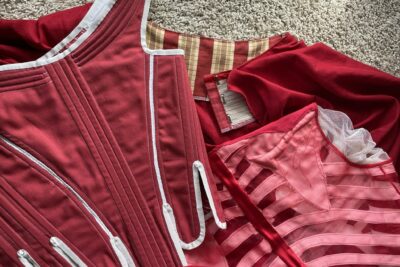
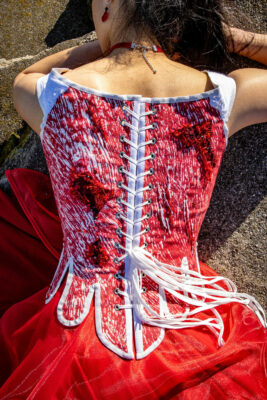
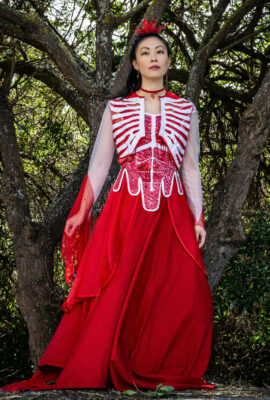
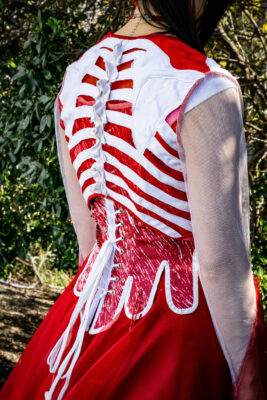
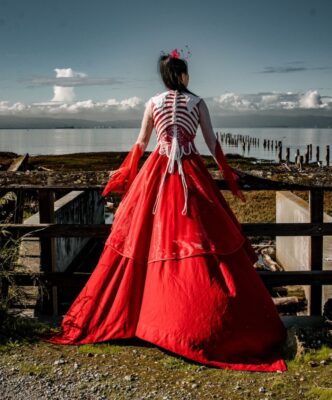
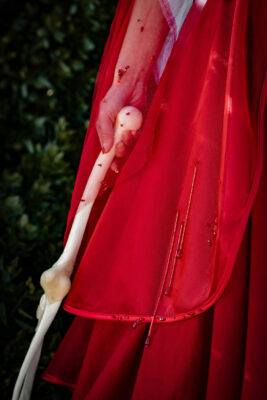
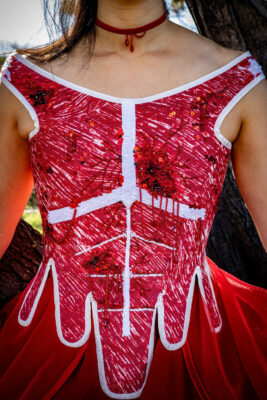
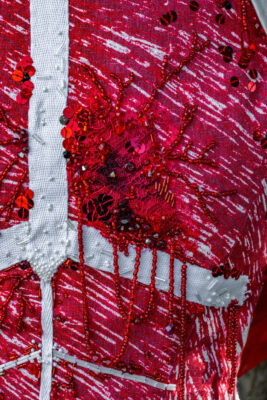
The texture of this is so amazing. Love how bits of blod and flesh drips from the bones, all in beutifull beads, trim and fabric. It is such a powerfull design built on a story more so.
This is such a powerful piece, I love how you used your embellishments to render her blood and how you incorporated the bones into your design. I also like your ending much better 🙂
I love the texture of the blood and muscles. That looks like it was tedious but well worth it.
I always look forward to your entry, the combination of design, texture construction and characterisation is a delight to see.